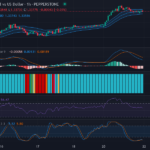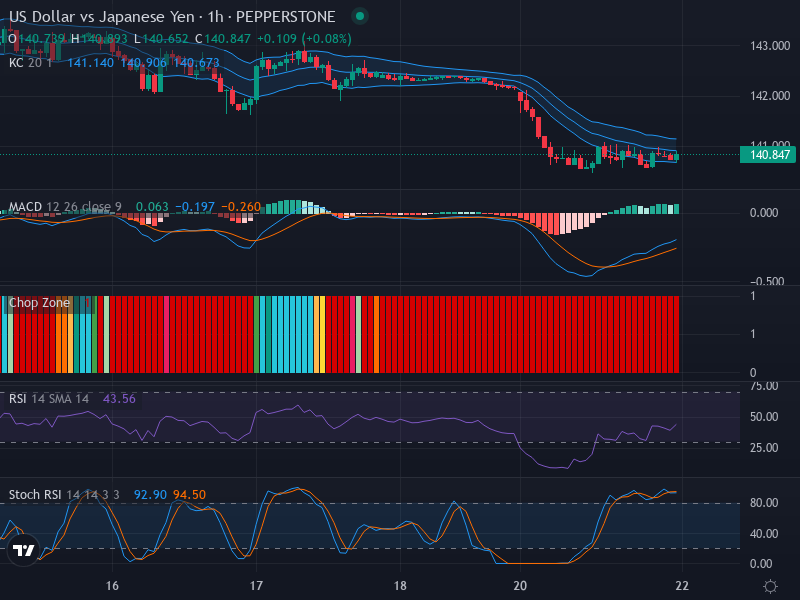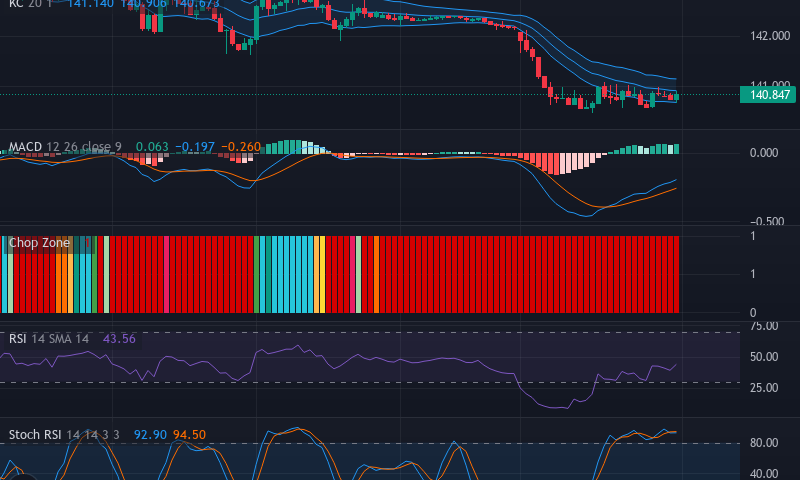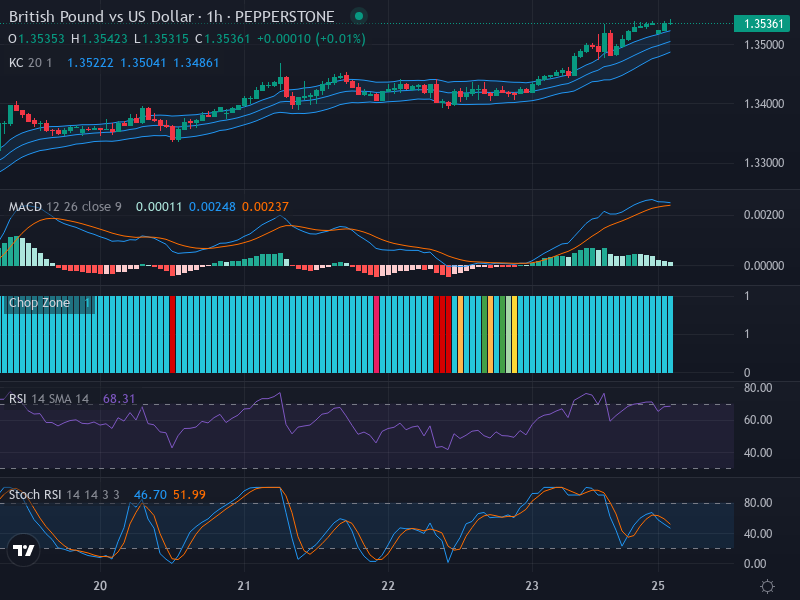
GBP/USD: An Opportune Retracement Amid Dominant Upward Trend – 22/04/2025
Tháng 4 21, 2025USDJPY Forex Analysis: Sentiment-Based Market Prediction
Tháng 4 22, 2025Market Overview
The currency pair of interest in this analysis is the US Dollar (USD) against the Japanese Yen (JPY), which at the moment indicates a neutral market direction. Although a small bearish inclination is evident, the market sentiment remains mostly uncommitted to a particular direction, as suggested by the lack of a notable bullish or bearish candlestick pattern. The current market price stands at 140.847.
Technical Analysis
In examining the candlestick patterns, an absence of strong conviction is noteworthy. Neither a bullish engulfing candle (signaling strong buying pressure) nor a bearish hammer (indicating strong selling) is visible. The prevalent neutrality is further reinforced by a string of minor-sized candles, which indicate indecision in the market.
From the perspective of potential pivot zones in this currency pair, we have discerned key resistive and supportive zones around price levels of 141.000 and 140.500 respectively. These pivotal points are vital as the price behavior around these levels may determine the future direction of the trend.
The Relative Strength Index (RSI), an indispensable tool that gauges overbought and oversold market conditions, sits at 43.56. This RSI reading suggests neutrality with a trace of an oversold condition, hinting at a possible lack of substantial movement in the near future.
On using the Keltner Channels for trend identification and volatility gauge, we learn that the price is meandering close to the middle of this channel, implying a sideways trend. As of now, volatility remains relatively stable with no significant expansions or contractions noticed in channel width. The Chop Zone Indicator aligns with this interpretation, according to the continuous line-up of red bars, which also affirm this sideways market momentum.
Contradicting the ongoing neutral conditions is the Stochastic RSI, a blend of the stochastic oscillator and RSI, which brings forth an overbought scenario with K and D values at 92.90 and 94.50 respectively. This overbought condition may signal a potential pullback or consolidation in the coming trading sessions.
Finally, analyzing the Moving Average Convergence Divergence (MACD), we are left without a clear signal as the MACD and signal line values are unspecified. In our future studies, we will pay keen attention to any potential bullish or bearish crossover between these lines as they are key to trend predictions.

Conclusion and Trading Recommendations
Given the predominantly neutral state of the USD/JPY market, traders should exercise patience, garnering more confirmations before taking positions. The JPY may remain range-bound until currency price breaches either the resistance or the support zones of 141.000 and 140.500 respectively.
Analysis of Time Frames
The analysis for the 1-week, 1-day, and 4-hour time frames brings forth the following insights:
- 1-week Time Frame: The price shows a sideways movement, confirming the neutral sentiment with no major breakouts.
- 1-day Time Frame: Trend indicators reflect indecision; thus, a definitive direction remains unclear.
- 4-hour Time Frame: The pattern suggests consolidation, reinforcing the absence of strong bullish or bearish momentum.
From these observations, potential entry points at the 1-hour time frame include:
- Buy Entry Point: 140.900, Take Profit Point: 141.200, Stop Loss Point: 140.600. This presents a moderate risk-reward ratio if the market decides to breakout upward.
- Sell Entry Point: 140.500, Take Profit Point: 140.200, Stop Loss Point: 140.700. This aims to capitalize on potential downward movements if the support level is breached.
Overall, considering the current market conditions, a Sell scenario seems more likely due to the substantial indications of overbought conditions and prevailing neutral trends, advising caution before pursuing aggressive trading strategies.
Risk Disclaimer
Forex trading involves substantial risk of loss and is not suitable for all investors. Prices can significantly fluctuate due to changes in demand or economic indicators, among other factors. It is strongly advised for investors to conduct their own due diligence or consult a financial advisor before making any investment decisions.




